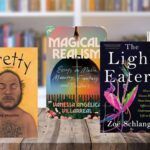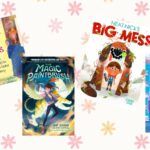
What Are The Book-Owning and Book-Reading Habits of Americans? Two New Reports Shed Insight
A new poll from YouGov published late last week explores a topic so many of us who love to read want to know more about: the book-owning habits of other Americans. The survey reached 29,000 people across the USA and explored what readers do when it comes to buying, storing, and, err, reading their books.
First and foremost, the bulk of Americans own at least a single book–85%. That is a huge number, given that access to books is not easy for all, and costs can make ownership prohibitive. Yes, even to one book. That said, the researchers found that most book owners do not keep just a single book. They have several, if not enough, to create their own private libraries. According to the data:
- 20% of Americans own between one and ten books;
- 14% own between 11 and 25 books; and
- 13% between 26 and 50.
There are more interesting numbers related to book ownership, too. Only 9% state that they own no physical books, while 69% own fewer than 100. Some 6% have no idea how many books they own. For those of you thinking that you’re now among the percentage of Americans who own a lot of books, you might be right: 4% of Americans claim to own between 500 and 1,000 books, while 3% claim to own more than 1,000 books. These numbers represent physical books, which remain the most common type of book for Americans to own. About 50% of Americans own an ebook, while 9% claim to own at least 100 ebooks.
Most Americans do not sort their books by any particular method. If they own at least one physical book, they are among the 85% to do nothing. But this changes as people begin to own more books. The most common organizational methods include, in descending order: genre or subject, book size, then “some other system.” Some other interesting numbers related to book organization among Americans are that:
- those with more books are more likely to have an organizational method;
- readers with more than 100 books were more likely to organize books by subject or genre than those who had fewer than 100 books;
- only 3% of book owners sort their books by color, and they are more often under the age of 30;
- those with smaller book collections were more likely to sort books by size than those with larger collections.
It should be of little surprise that age, class, and education all correlate to book ownership. Older Americans have more books, those who are from more wealth own books, and those with more formal education have more books. This is consistent with data we already know and reinforces the reality that things like book bans disproportionately hurt the most vulnerable Americans.
Good news for parents or guardians, too–book ownership does not seem impacted by having children in the home. There are only small differences in the proportion of those who own at least 100 books and whether or not there are children in the home. It’s likely fair to assume that book owners who have young people in the home share books with them, helping those readers develop their own personal libraries.
You can check out the full results of the survey over on YouGov.
Just days before the release of this survey, the National Endowment for the Arts (NEA) shared data about how adults participated in the arts during COVID-19. Within their surveys were questions related to reading habits that are interesting to take in conjunction with YouGov’s survey. The NEA’s twin surveys assessed American participation in the arts between July 2021 and July 2022. Among the findings:
- 53% of Americans read “literature and/or books of some kind” in 2022. This number is down from 57% in 2017.
- When asked specifically about reading a book–print or digital–in 2022, 49% of adults said they had. This number is down over 6% since 2012.
- Adult readership of novels, short stories, poetry, and plays decreased significantly between 2012 and 2022, from 45.2% in 2012 to 37.6% in 2022.
- Poetry readership has been down since 2017, but it is up since 2022. One of the notes with this finding–and something that seems worth a deeper dive in future surveys–is that researchers asked about poetry listenership. Approximately 5% of Americans listened to poetry in 2022, whether via broadcast, recordings, or the web.
- Statistically significant decreases in book reading habits were seen in the following demographics: men and women; white people; those ages 55-75; and those with a high school diploma, some college, and those with a graduate or professional degree.
- Statistically significant decreases in literature reading habits (this includes novels, short stories, plays, and poetry) were seen in the following demographics: men; white people; those between the ages of 18-24 and 55-75; and those with a high school diploma, some college, and those with a graduate or professional degree.
- Men, white people, and those age 55 and older were significantly less likely to have read a novel or short story in 2022, while poetry readership saw significant decreases by men and women, as well as Black readers.
The full results of both surveys from the NEA are available here.










